Students walk the footsteps of psychology’s pioneers in Europe
Friday, May 16, 2025
Photos provided by Rob Cooley, professor of anthropology/environmental science, and Susan Koons Slamka, associate professor of psychology
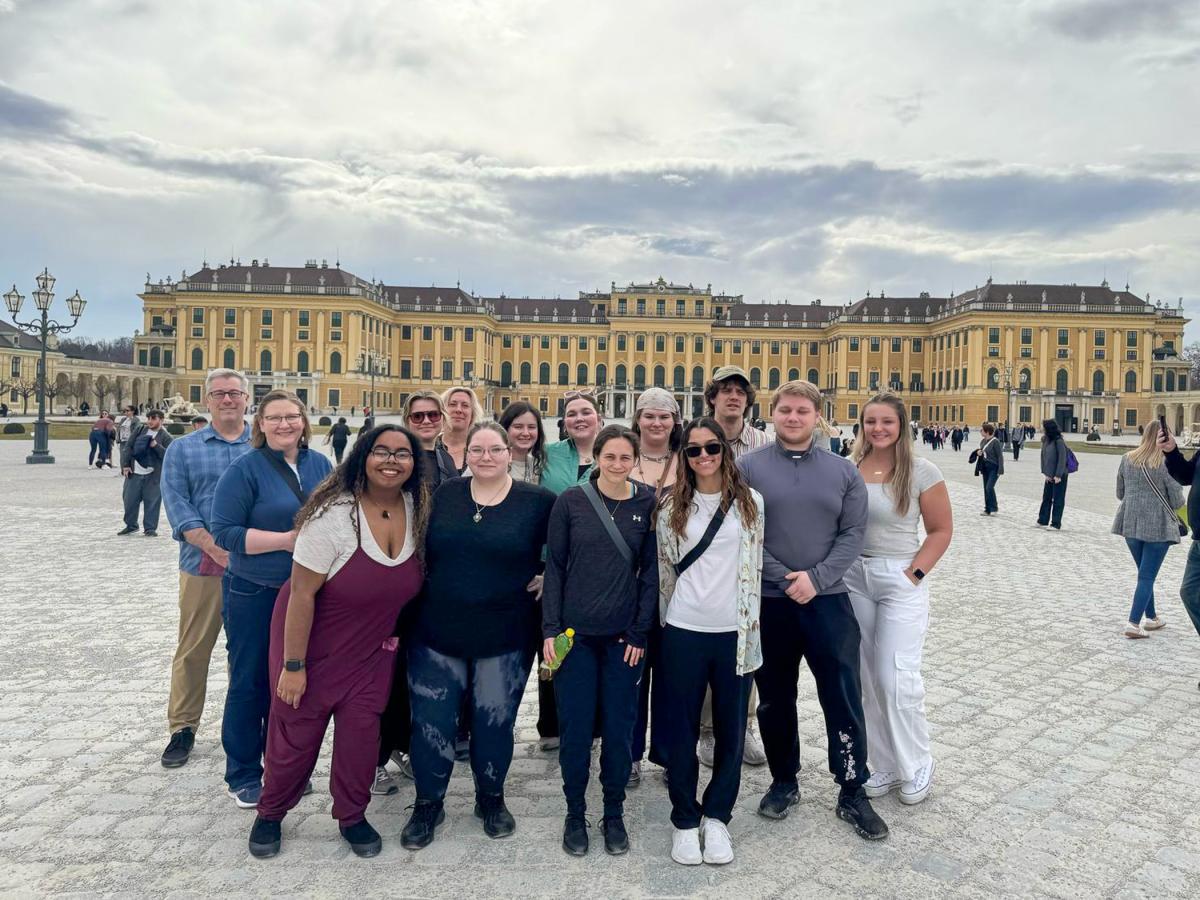
A group of Penn College students and faculty gather in front of Schönbrunn Palace in Vienna. The group visited Vienna and London to experience the cultures and regions that gave birth to the science of the mind and the western-based practice of counseling and therapy.
Students in a Pennsylvania College of Technology course that focuses on the history of psychology recently visited Austria and England, where they experienced the cultures and regions that gave birth to the science of the mind and the practice of Western-based counseling and therapy.
Eleven students, joined by two faculty members, explored some of the first psychological laboratories and hospitals and toured the homes of pioneering theorists.
“It was an opportunity to see the culture behind the development of the discipline, looking at the founders and what formed their thought processes about why people do what they do,” said Susan Koons Slamka, associate professor of psychology, who taught the course with Rob Cooley, professor of anthropology/environmental science.
In Vienna, they visited the homes of Sigmund Freud, a neurologist and the founder of psychoanalysis, and neurologist and psychologist Viktor Frankl. In London, they visited the home of Charles Darwin, the Bethlem Royal Hospital Archives and Museum, the National Science Museum, and the Anna Freud Center.
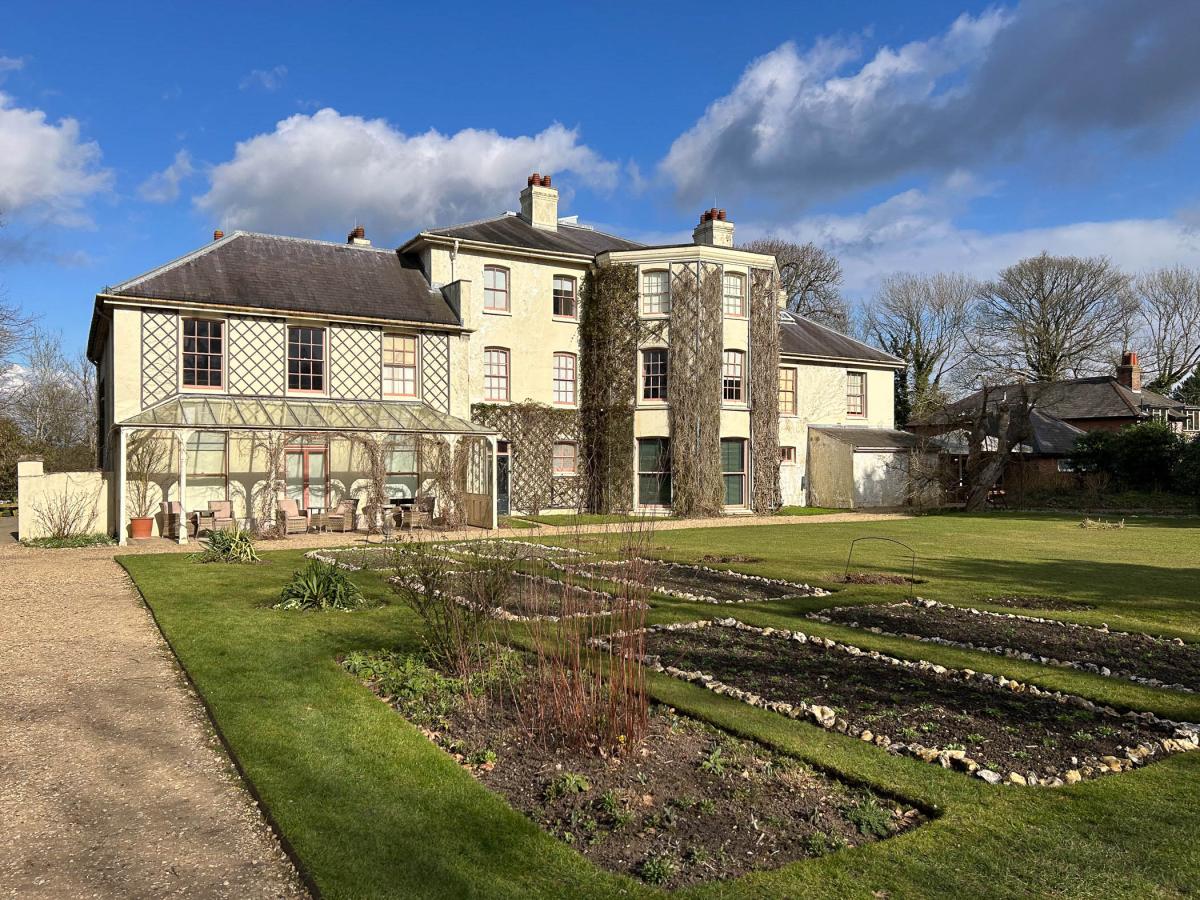
In Kent, England, students stroll through Charles Darwin’s backyard.
“I am very much a ‘put it in perspective’ kind of learner,” said human services & restorative justice student Madison E. Beasley, of Jersey Shore. “Seeing everything we’ve been talking about was a very good way to gain an understanding.”
Walking in the literal footsteps of Freud, Frankl and Darwin helped the students to consider the climate that influenced their approaches.
The Industrial Revolution, science and the Holocaust were influences.
Freud and Frankl lived through the Holocaust, but their theories about what motivates humans are vastly different, Koons Slamka explained.
Freud, who was not imprisoned but lost sisters in concentration camps, theorized that humans are motivated by pleasure seeking and aggression.
Frankl, who survived four concentration camps, asked “why did I survive” and theorized that humans are motivated by a search for life’s meaning.
Darwin approached psychology through the lens of evolutionary theory: Emotions and social behaviors are products of adaptation and serve specific functions.
Anna Freud coined terms – like “defense mechanism” – that are commonly known today and continued the legacy of her father, Sigmund.
Walking Darwin’s “thinking path” and seeing the way the theorists set up their homes and offices shed light on their personalities.
“You really get the backstory on these theorists that you never would if you just read about them in books,” Koons Slamka said.
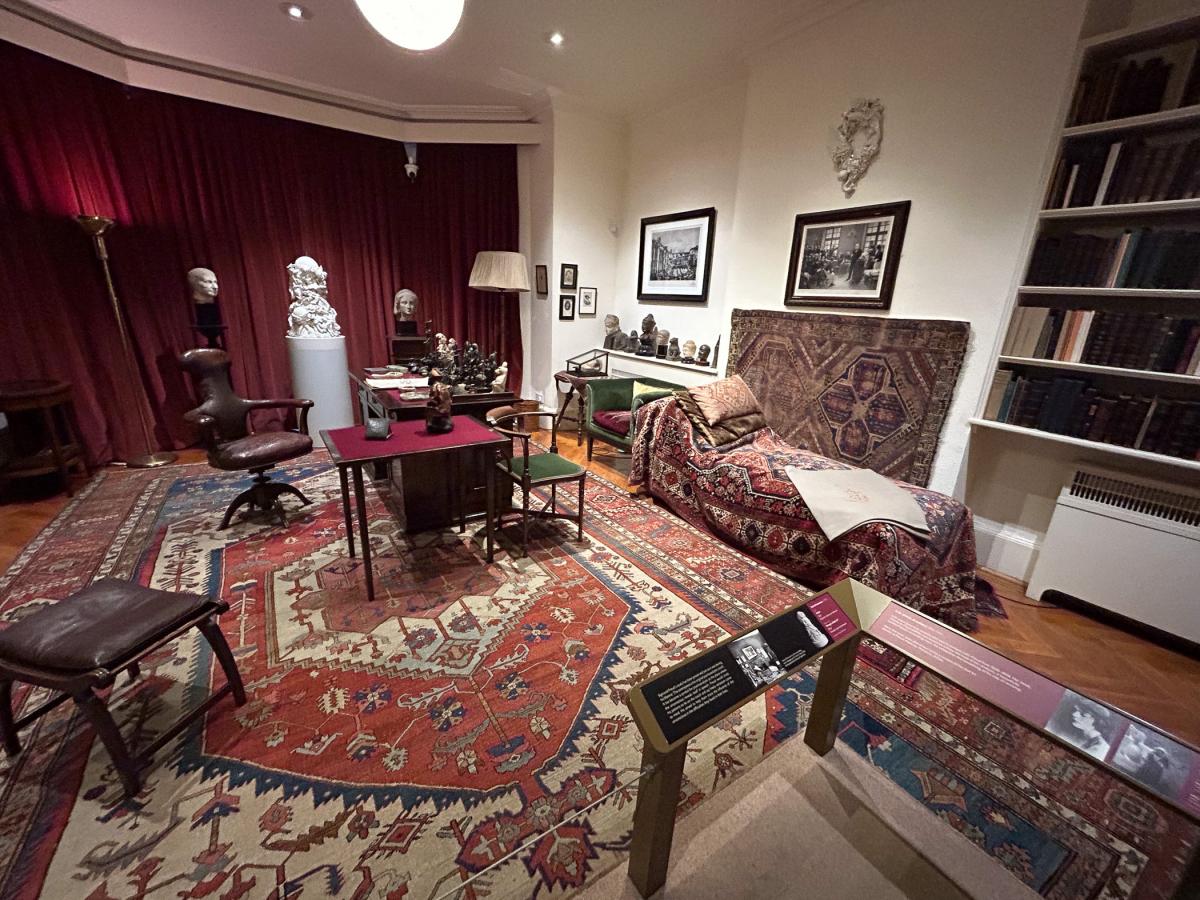
The office of Sigmund Freud, at the Freud Museum London, where the neurologist once lived.
Other highlights included seeing the patient couch Freud used in his practice, walking through a 300-year-old University of Vienna building where students continue to study medicine in the same classrooms as Freud, visiting the Shoah Wall of Names Memorial that lists 65,000 Austrians who died in the Holocaust, and touring the archives of London’s Bethlem Royal Hospital (the source of the term “bedlam”), where Beasley said she gained an appreciation for the progress that has been made in mental health care.
The hospital was founded in the 13th century and began specializing in mental illness (and other conditions believed to be mental illness) by the early 1400s. In its museum, the students saw relics such as straitjackets and the pads from “padded rooms.”
“People who were considered insane were almost considered to be subhuman,” she said.
The students also immersed in the neighborhoods where they stayed and developed travel skills.
Cooley recalled a student’s observation that the U.S. has “some catching up to do” in mental health care: “Travel has influenced this student to make things better here in the U.S.,” Cooley said. “To me, that’s what it’s all about.”
Visit the Global Experiences site to learn more about these Penn College opportunities.
For information about Penn College, a national leader in applied technology education, email the Admissions Office or call toll-free 800-367-9222.
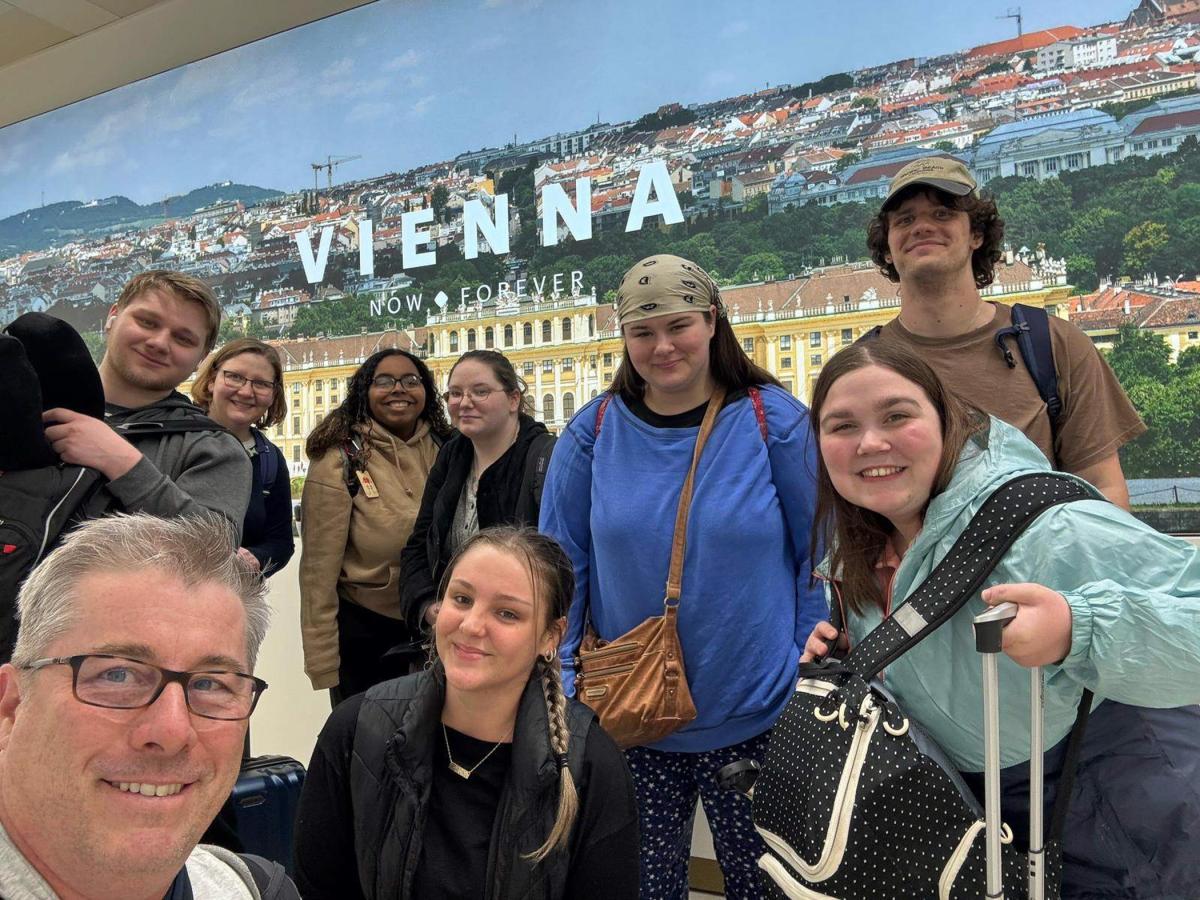
The group celebrates its safe landing in Vienna.
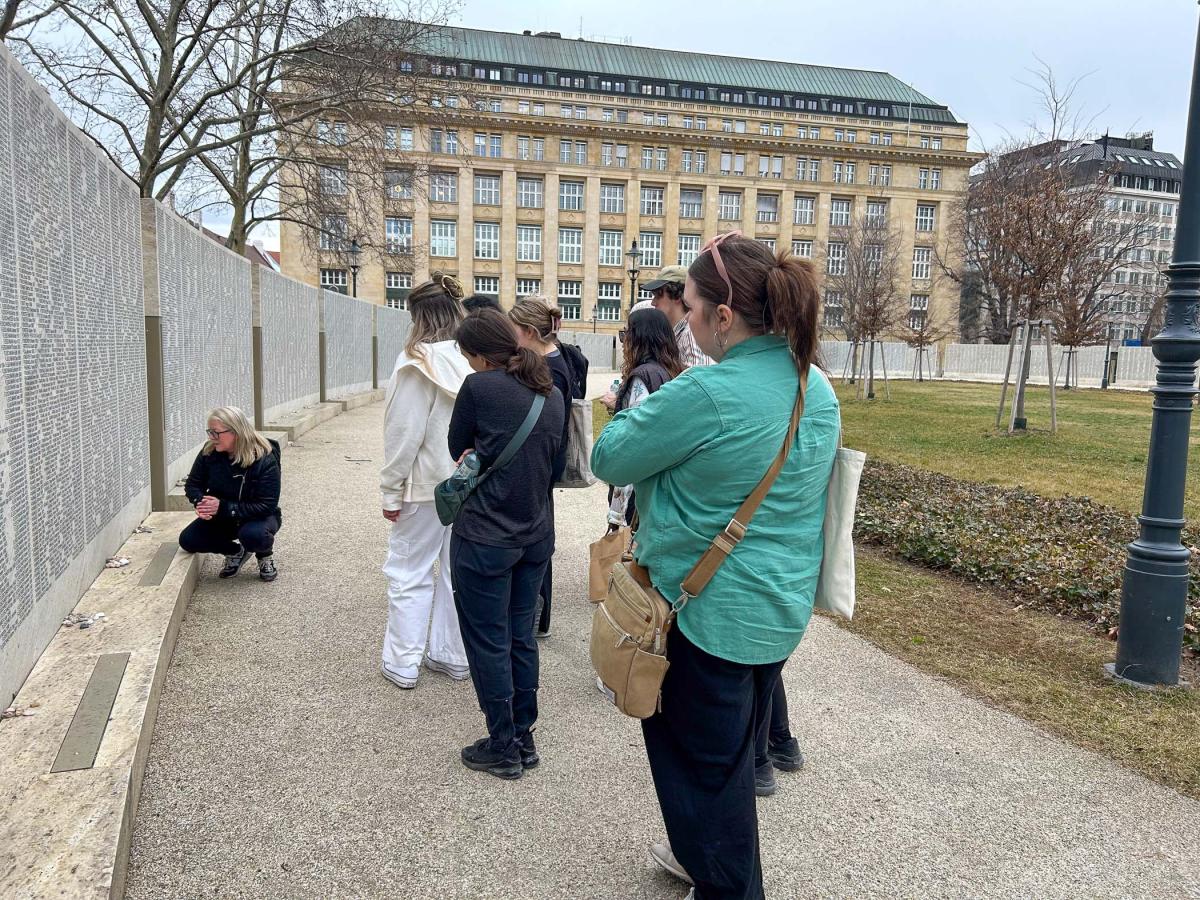
Students observe Vienna’s Shoah Wall of Names …
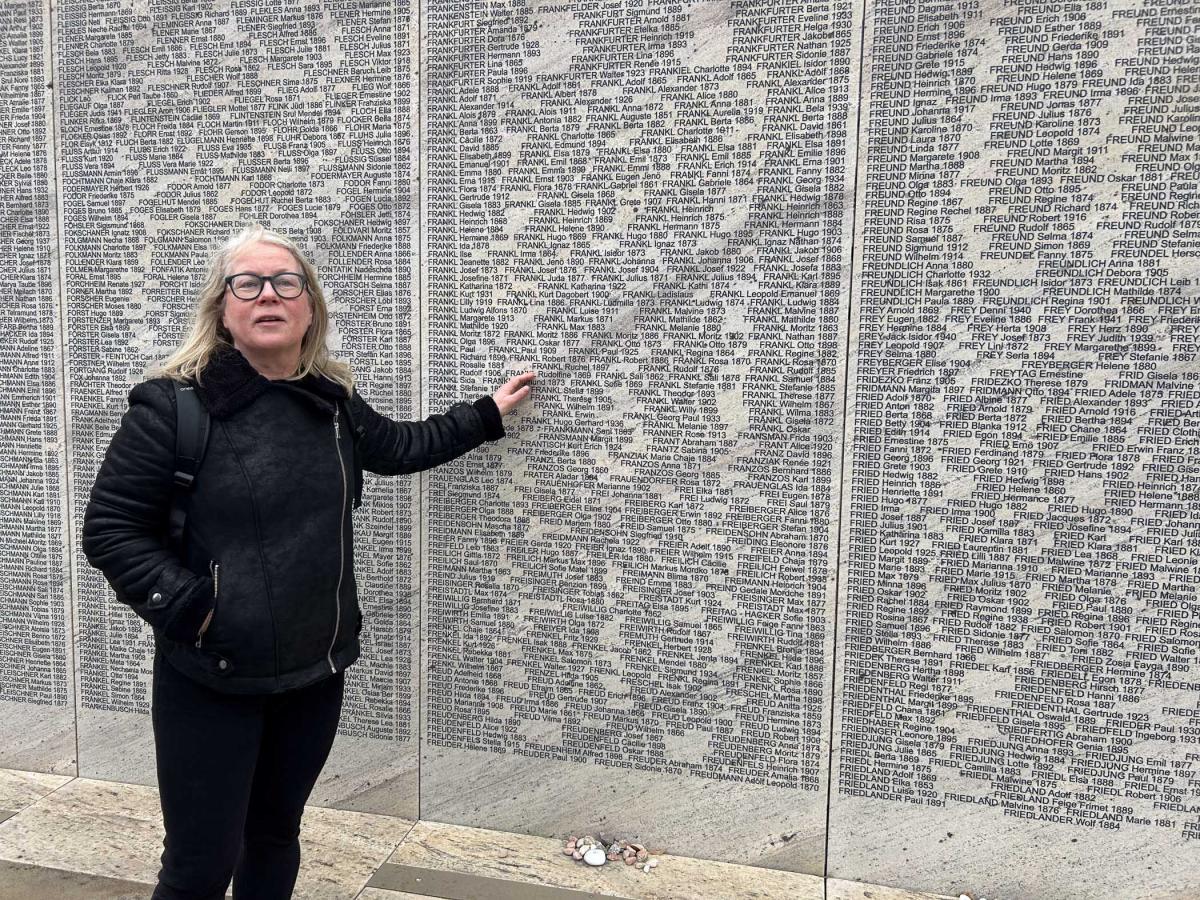
… where a tour guide points to the names of family members of Viktor Frankl. Near the bottom of the same panel are the names of members of Sigmund Freud’s family.
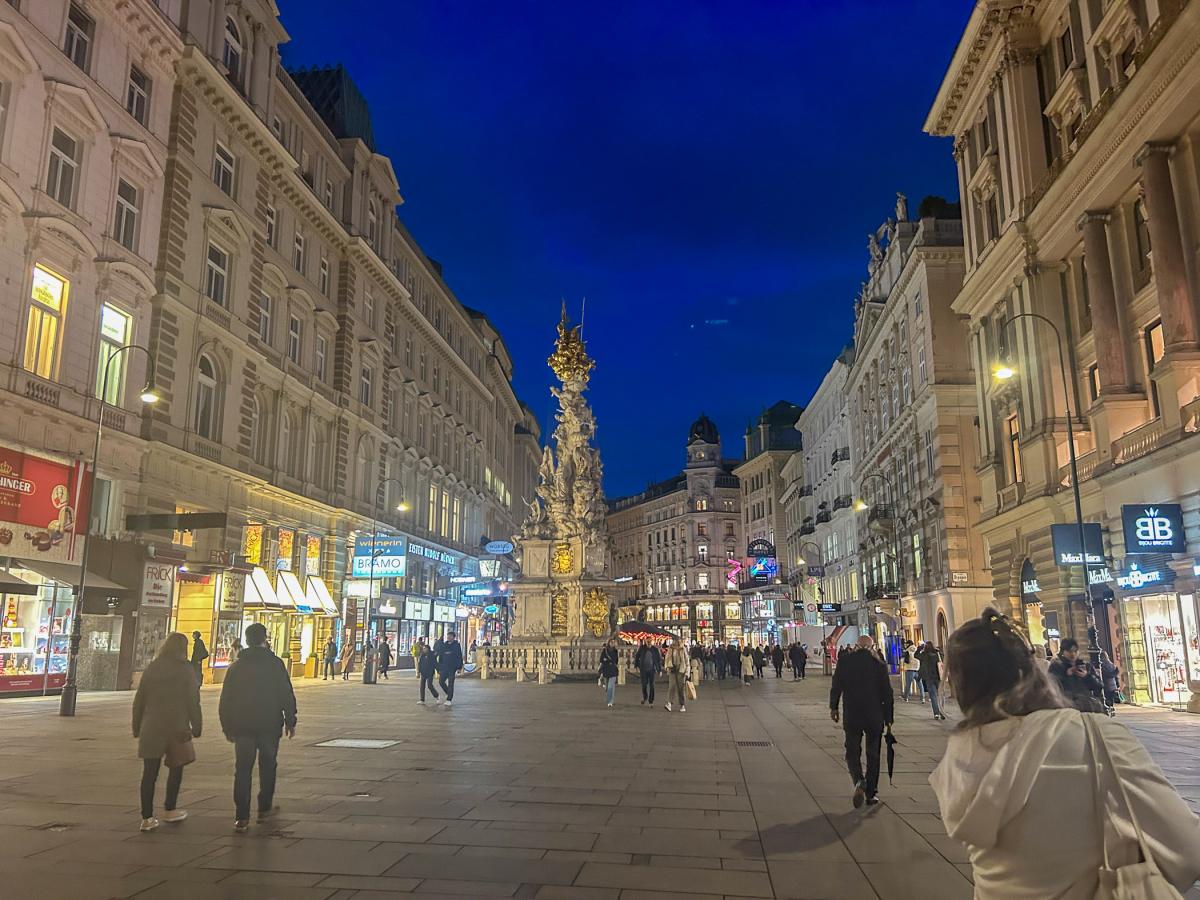
A scene from Graben, a pedestrian shopping street in Vienna. In the center of the street is a Vienna landmark: the Pestsäule (plague column), erected in the 1600s.

At the Viktor Frankl Institute Museum, human services & restorative justice students Madison E. Beasley (left), of Jersey Shore, and Madison Steinbacher, from Muncy, flip through a journal, where visitors are invited to leave comments.
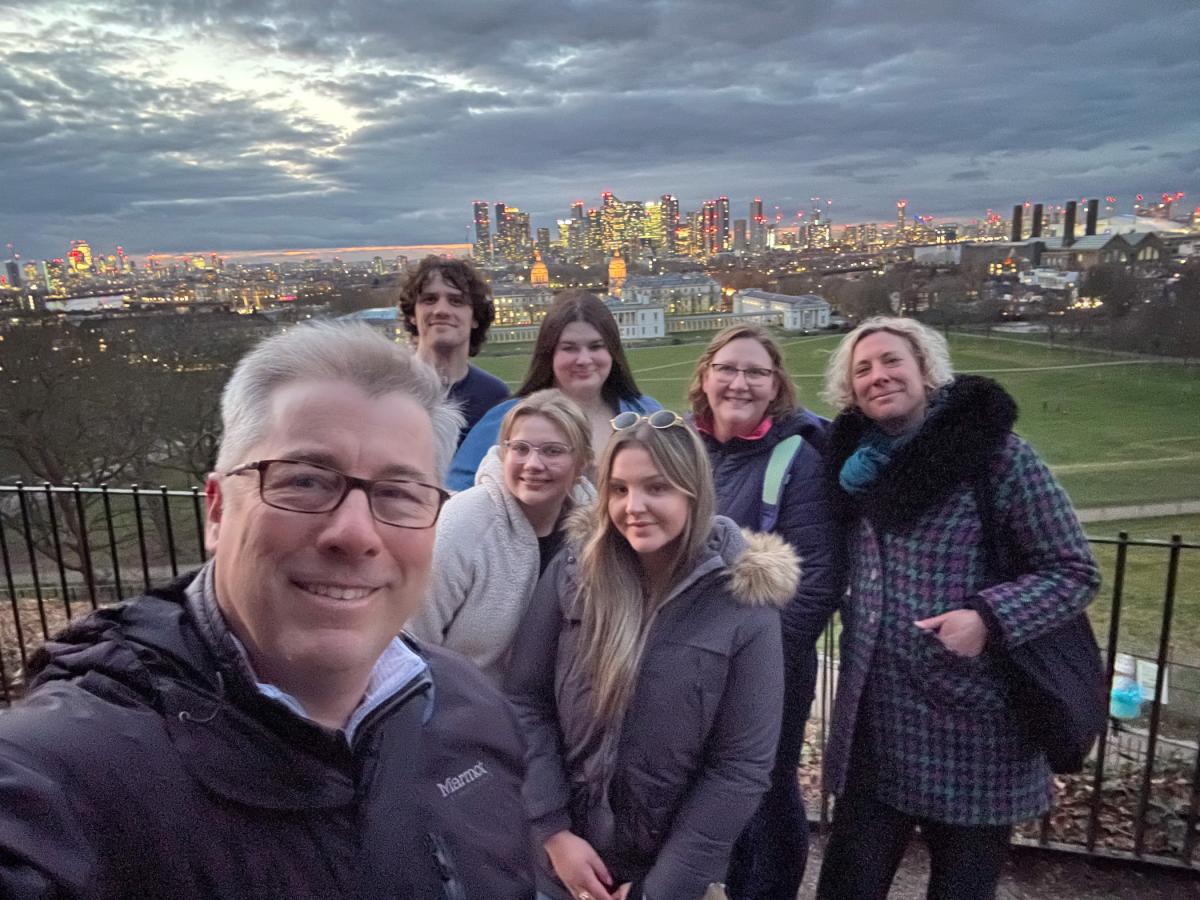
At the Prime Meridian in Greenwich, Rob Cooley (in foreground), professor of anthropology/environmental science, and Susan Koons Slamka (second from right), associate professor of psychology, pause with students and the group’s field director, Silke Beller (far right).
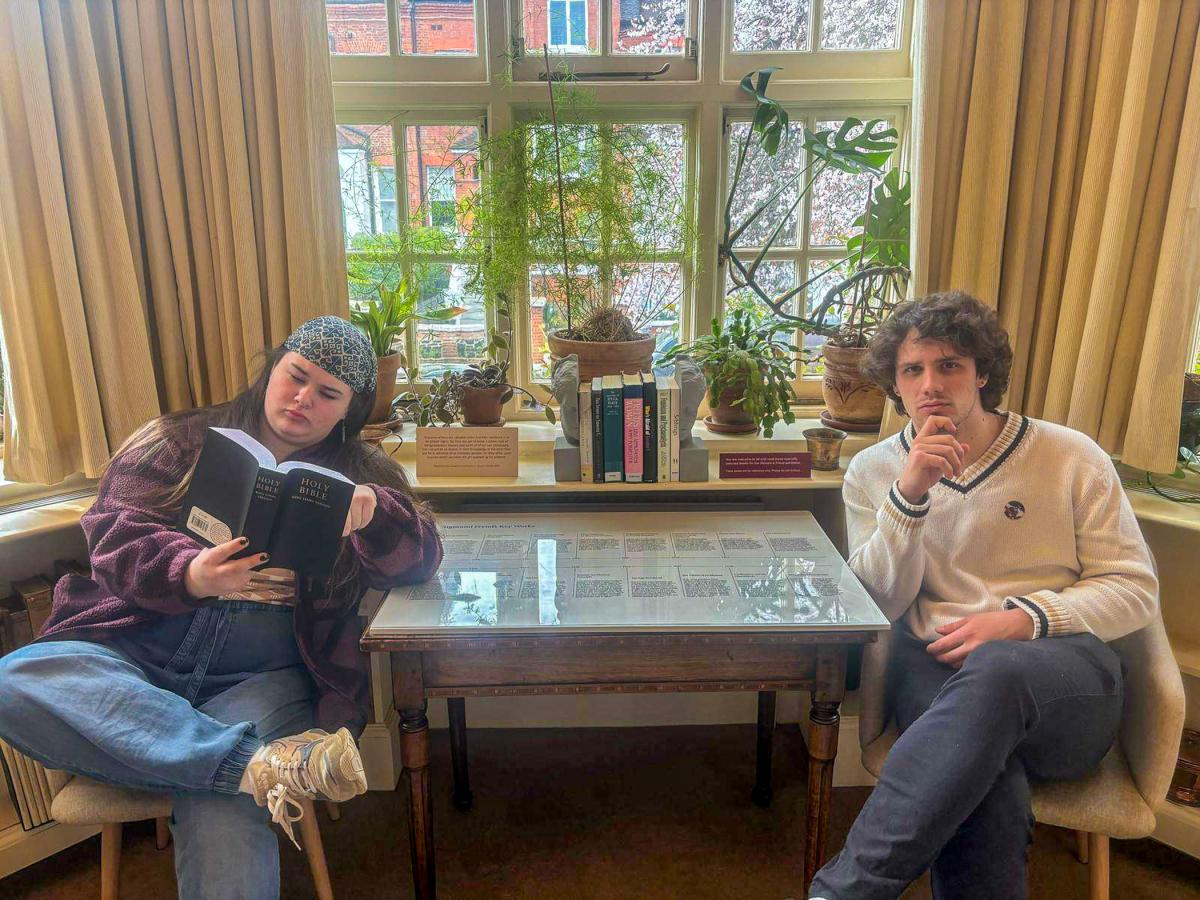
Steinbacher (left) and Shawn A. Cicchitello, a non-degree student from Hughesville, strike studious poses in the Freud Museum.
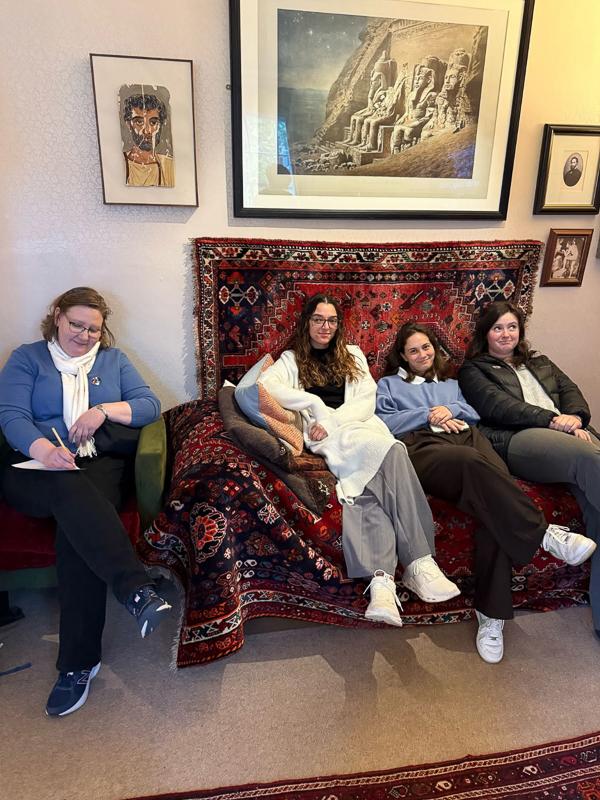
Having fun with Freud: Slamka (left) plays the “analyst” for students (from left) Iyanna Porter, a pre-physician assistant studies student from York; Gillian Way, a biomedical sciences student from Hughesville; and Rachel Dostick, a nursing student from Muncy, seated on a replica of Sigmund Freud’s famous couch …
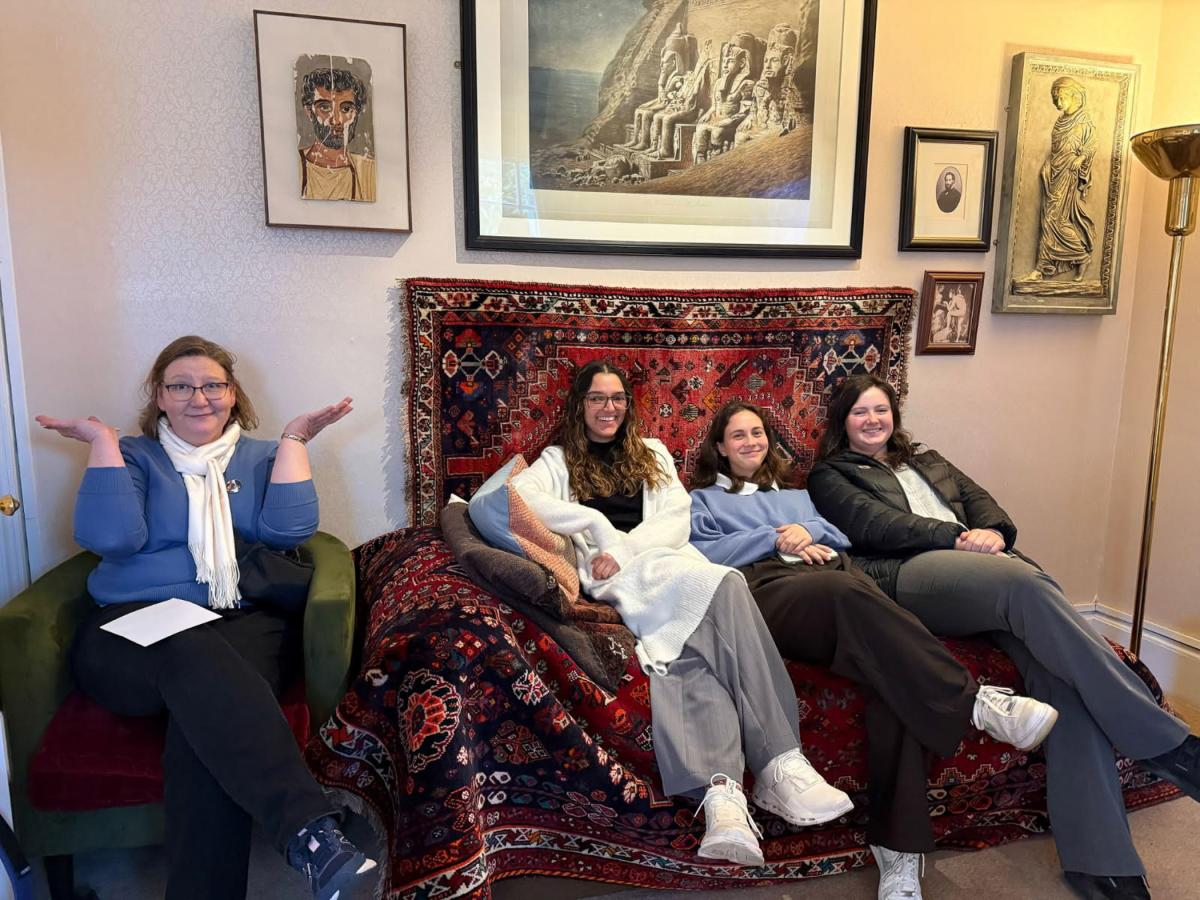
… with “inconclusive” results.
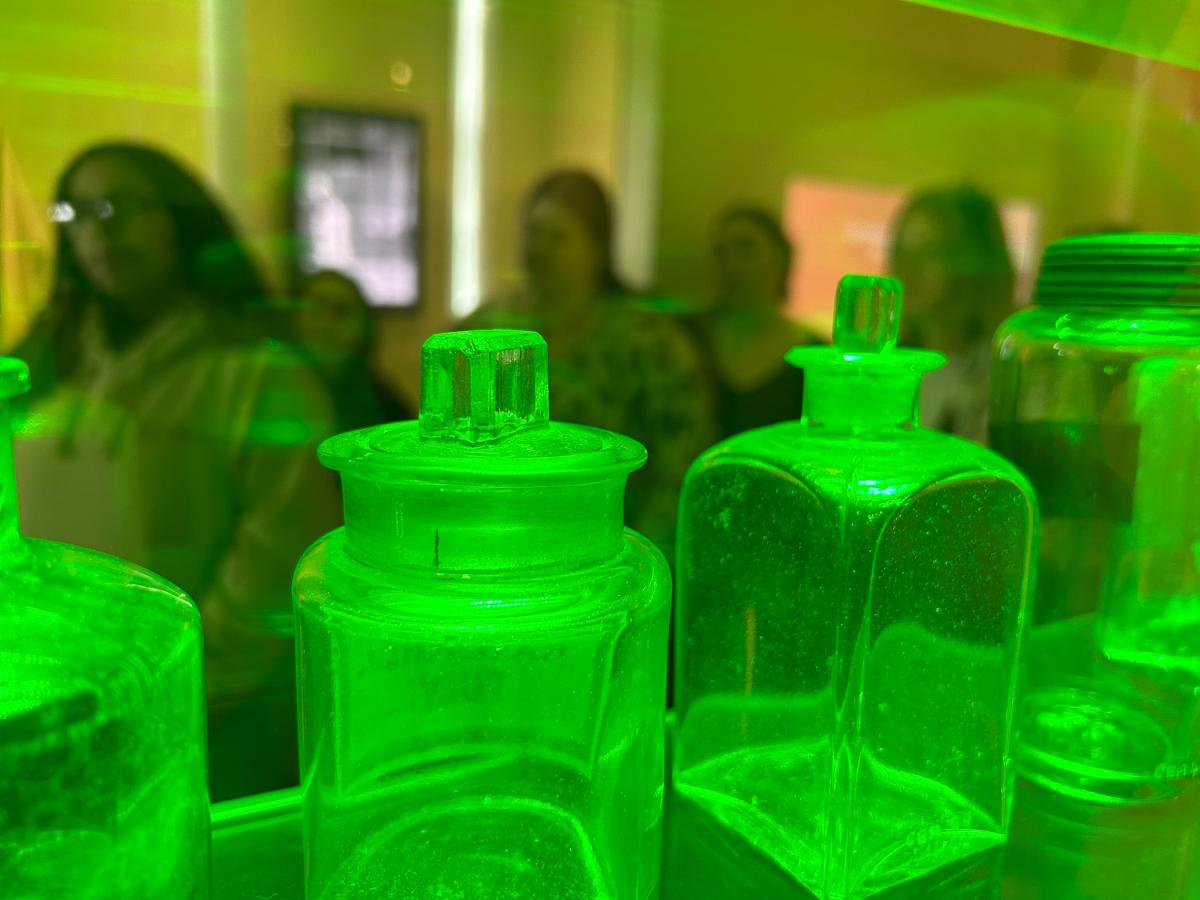
In the Bethlem Museum of the Mind, students file past relics of mental health care’s past, including antique medicine bottles.
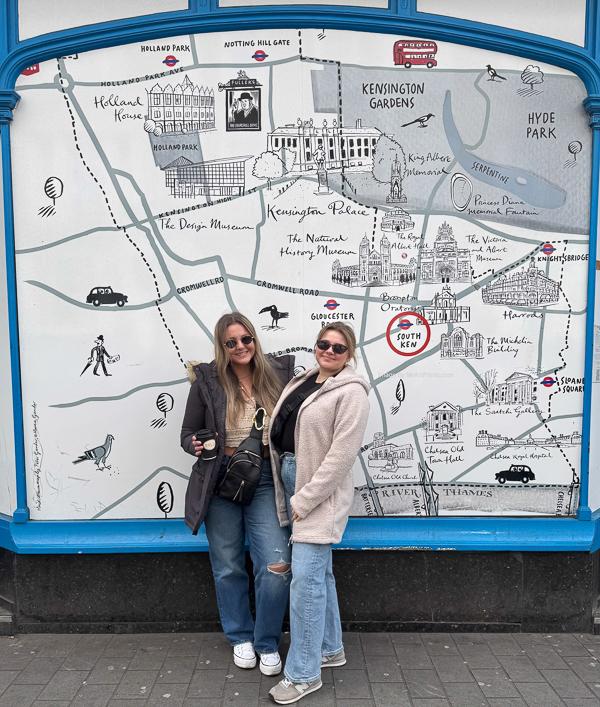
Nursing students Jade Neiman (left), of Williamsport, and Lillian Storm, of South Williamsport, map their route in London and consider their next direction.
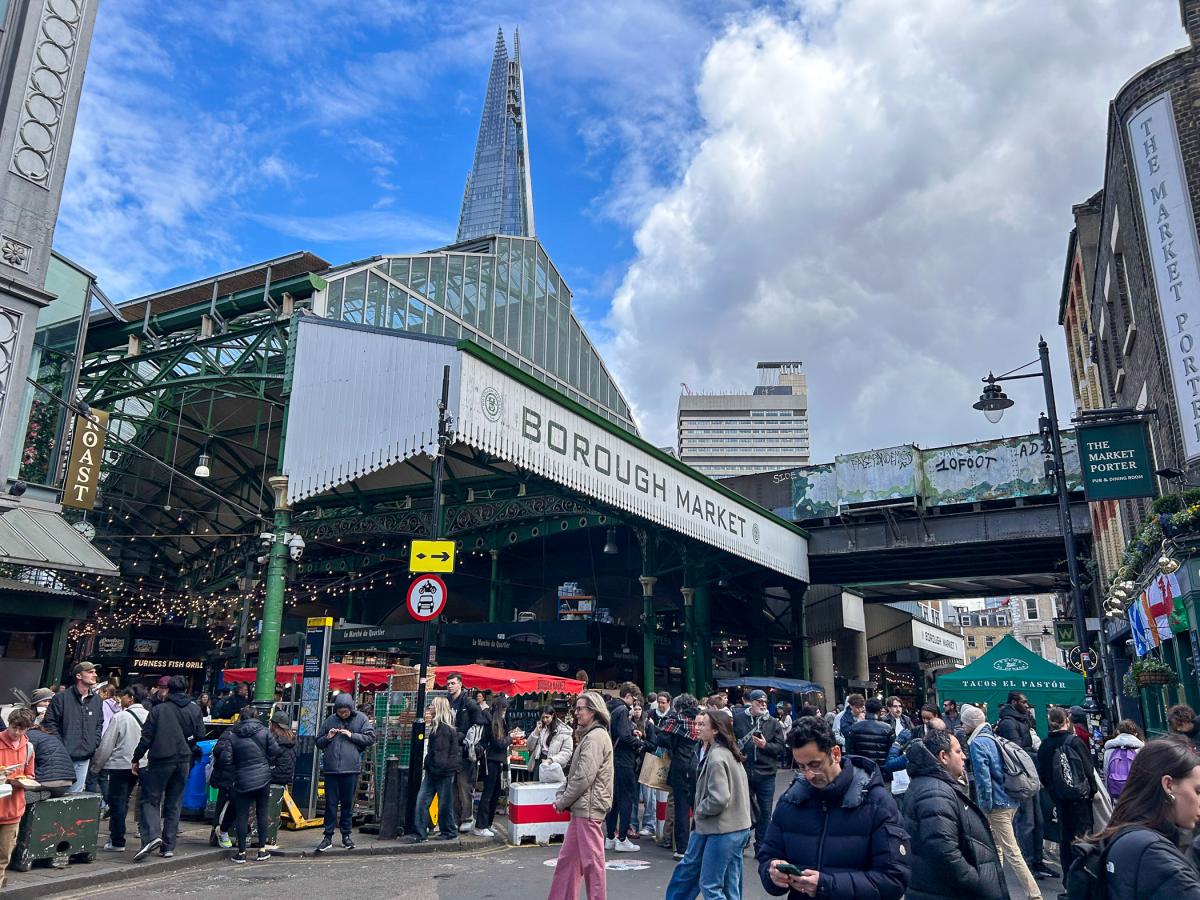
Immersing in the life of a Londoner, students visit the Borough Market ...

... and take in an abundance of enticing visuals and sensory delights.
